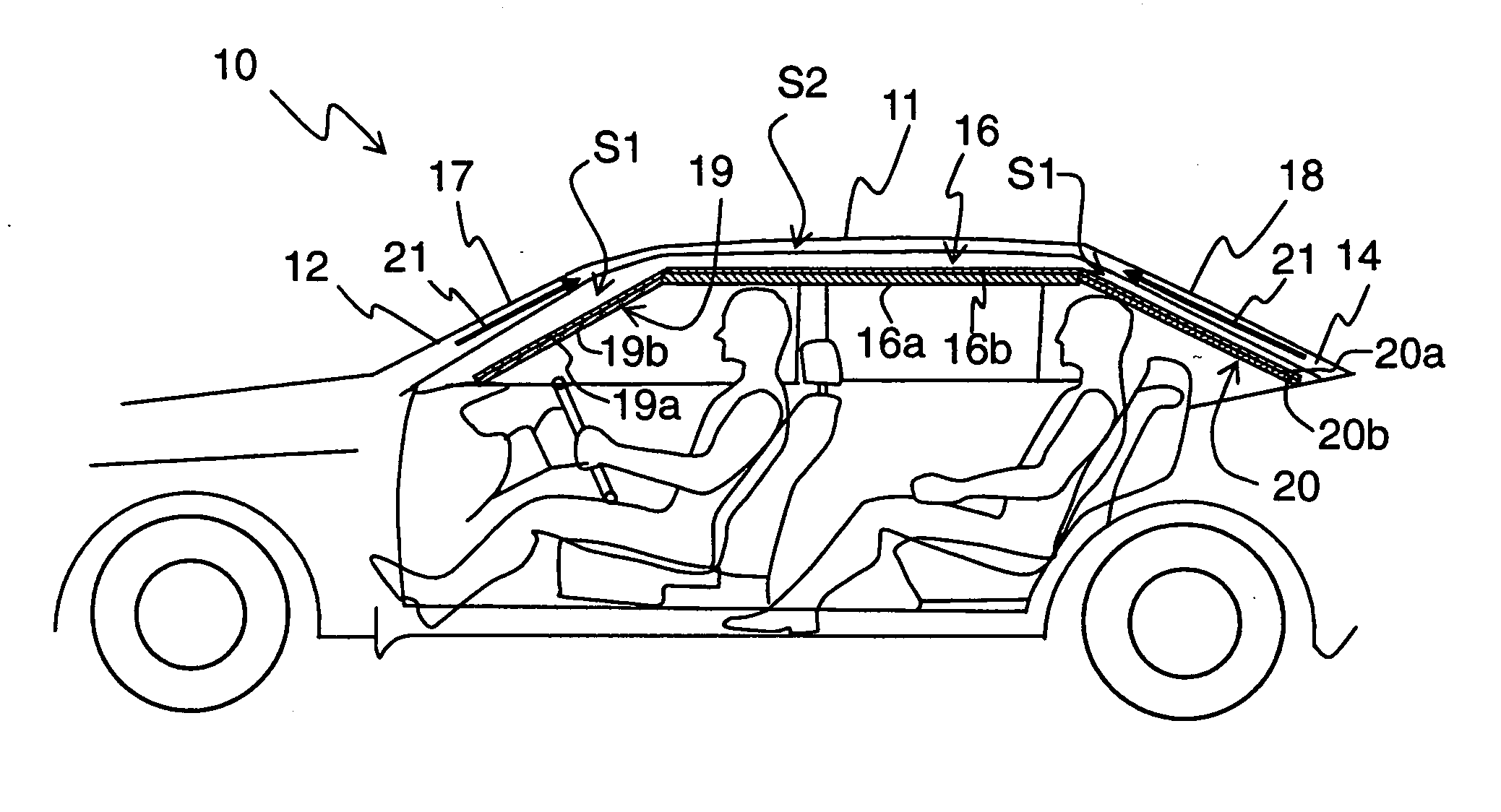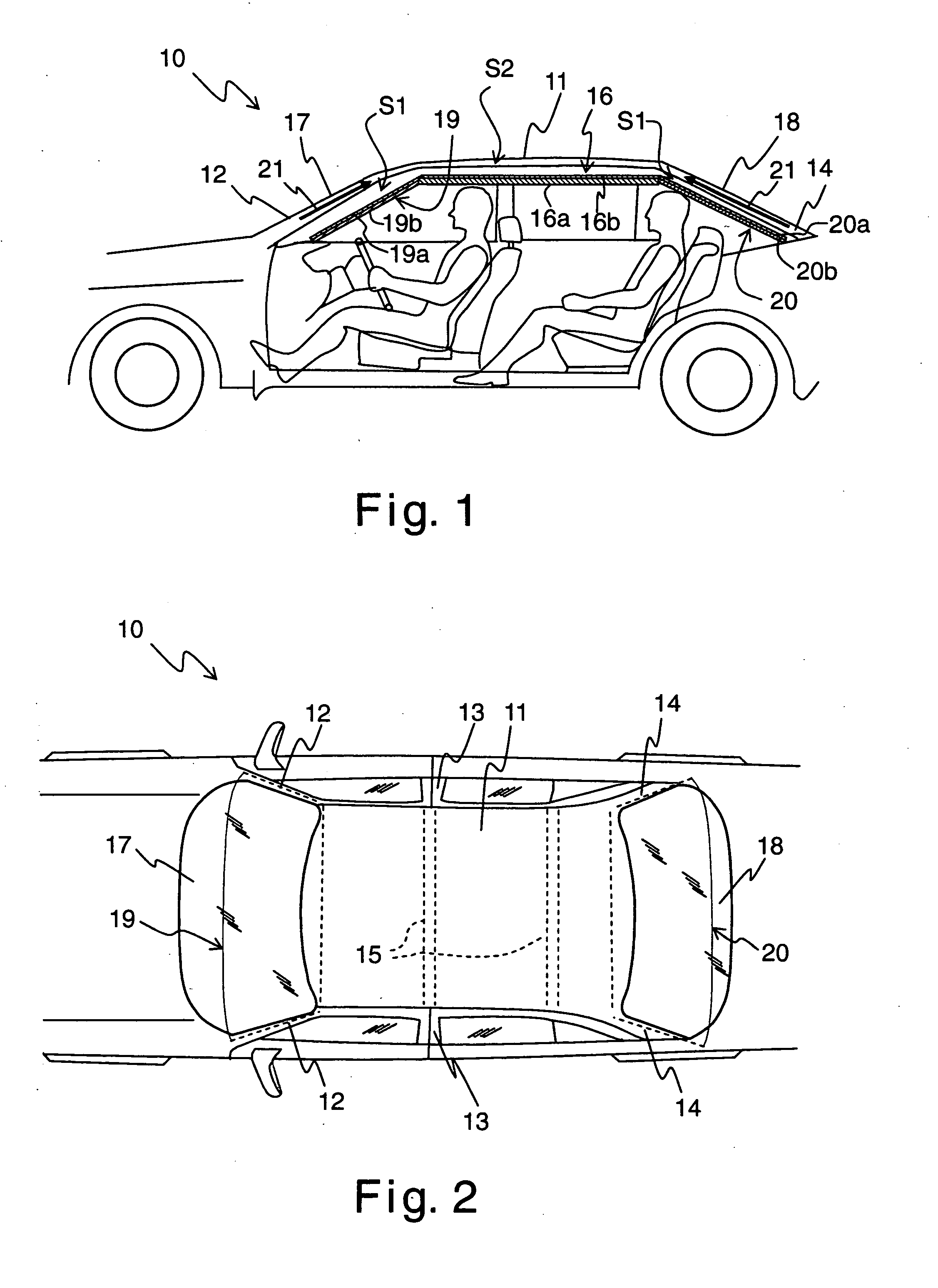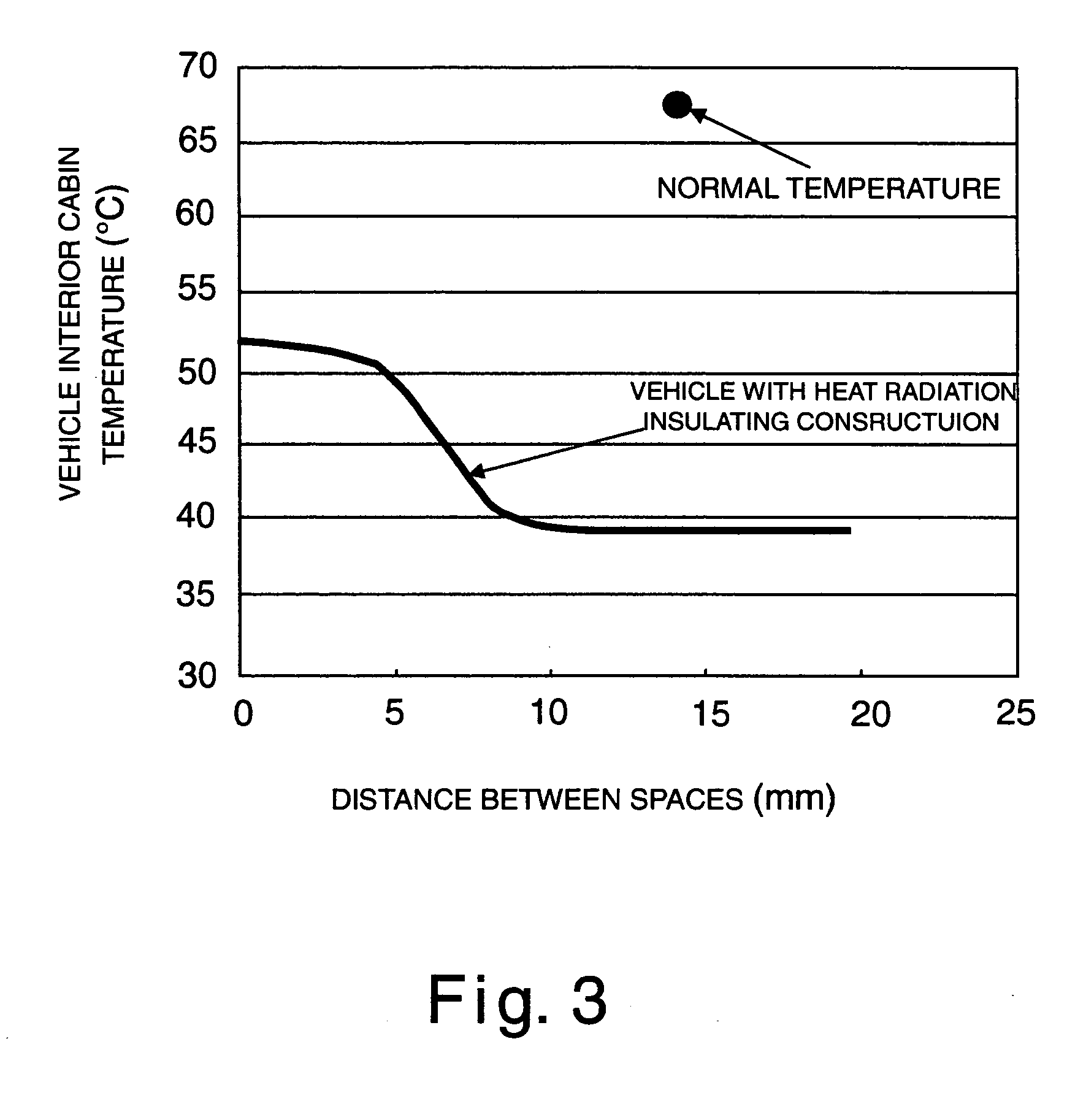Vehicle body structure with heat radiation insulating arrangement
a technology of heat radiation insulation and vehicle body, which is applied in vehicle heating/cooling devices, roofs, transportation and packaging, etc., can solve the problems of discomfort for occupants to ride in the vehicle under such a situation, the surface temperature of an interior part cannot be easily lowered, and the vehicle is not easy to opera
- Summary
- Abstract
- Description
- Claims
- Application Information
AI Technical Summary
Problems solved by technology
Method used
Image
Examples
Embodiment Construction
out light shielding shades Comparative Shades used, but no 52 52 Example 2 spacing Comparative Shades used, with 50 54 Example 4 spacing of 5 mm
[0053] As can be understood from Table 1, the temperature of the exterior roof panel 11 is very high in the embodiments 1, 2 and 3 as compared to the comparative examples 1, 2 and 3 although the middle temperature inside the vehicle cabin is much lower in embodiments 1, 2 and 3 compared to comparative examples 1, 2 and 3. Namely, the temperature inside the vehicle cabin is sufficiently reduced by the chimney effect.
[0054] FIG. 3 shows changes in the middle temperature inside the vehicle cabin due to the gap between the second space S2 based on these results. As shown in FIG. 3, it is understood that if the prescribed gap of the second space S2 is maintained at 10 mm or more, convective heat transfer will be very effective.
[0055] As used herein, the following directional terms "forward, rearward, above, downward, vertical, horizontal, below a...
PUM
 Login to View More
Login to View More Abstract
Description
Claims
Application Information
 Login to View More
Login to View More - R&D
- Intellectual Property
- Life Sciences
- Materials
- Tech Scout
- Unparalleled Data Quality
- Higher Quality Content
- 60% Fewer Hallucinations
Browse by: Latest US Patents, China's latest patents, Technical Efficacy Thesaurus, Application Domain, Technology Topic, Popular Technical Reports.
© 2025 PatSnap. All rights reserved.Legal|Privacy policy|Modern Slavery Act Transparency Statement|Sitemap|About US| Contact US: help@patsnap.com



